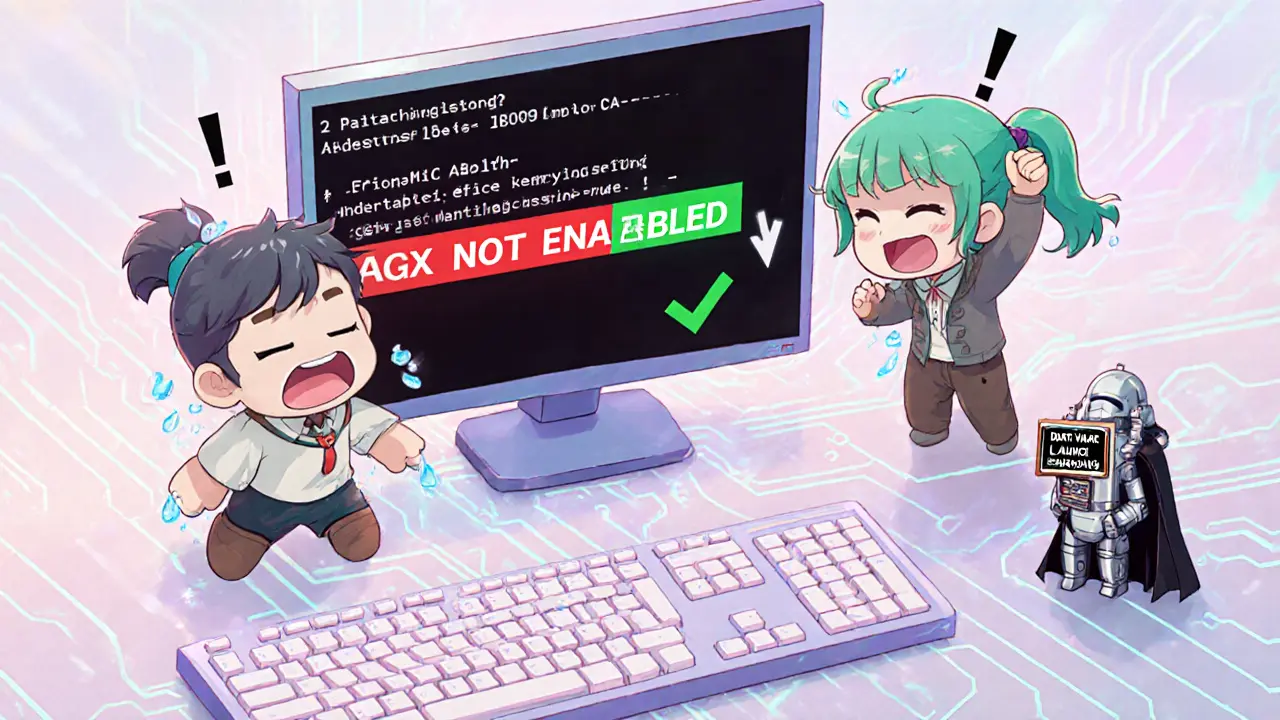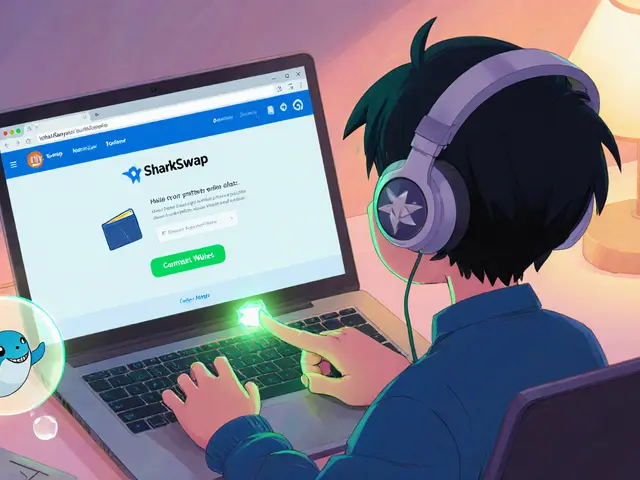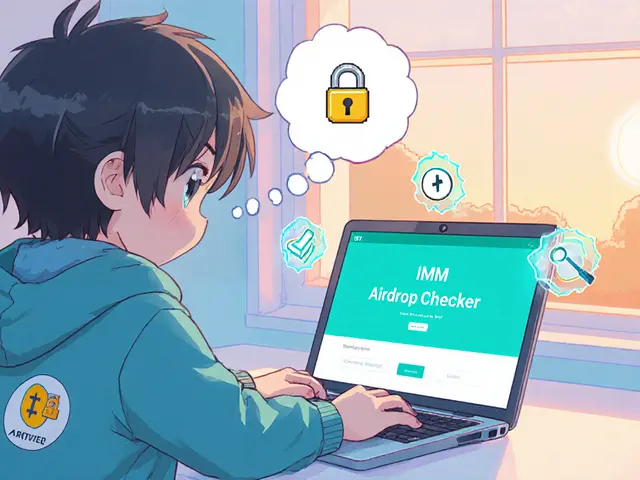If you’ve heard about the PHA airdrop from Phala Network, you’re not alone. Thousands of crypto enthusiasts are trying to figure out if it’s worth their time - and whether they can actually get those 30 PHA tokens. But this isn’t your typical airdrop where you just connect your wallet and tweet. This one demands hardware, patience, and a bit of tech know-how. Here’s exactly how it works, what you’re signing up for, and whether it still makes sense in late 2025.
What Is Phala Network?
Phala Network isn’t just another blockchain project. It’s built to solve a real problem: privacy in smart contracts. Most blockchains are public by design - every transaction, every contract call, is visible. Phala changes that. It uses Trusted Execution Environment (TEE) technology, which lets smart contracts run inside secure hardware enclaves (like Intel SGX). Think of it like a locked safe inside a public library. Everyone knows the safe is there, but only the right person can open it.
This lets Phala offer confidential computing on-chain. That’s useful for things like private DeFi trades, secure AI model training, or encrypted data sharing - all without trusting a central server. It’s not flashy, but it’s functional. And that’s why it’s still around after five years, even as the crypto market swings wildly.
The PHA Airdrop: How It Actually Works
The airdrop isn’t a giveaway. It’s a recruitment tool. Phala needs miners - people who run nodes that power the network. In exchange for helping secure the system, you get 30 PHA tokens. That’s it. No sign-ups. No forms. No social media tasks.
To qualify, you must:
- Download and install the official Phala miner software
- Run it on hardware that supports Trusted Execution Environment (Intel SGX or AMD SEV)
- Complete the setup process by running terminal commands
- Submit screenshots proving your node is active
Once your node is verified, you’re in. But here’s the catch: you won’t get the tokens right away. Rewards are locked until the pre-mainnet phase, codenamed “Darth Vader,” goes live. And as of November 2025, that date hasn’t been announced.
Is 30 PHA Worth It?
At $0.1029 per PHA (as of October 2025), 30 tokens equal about $3.09. That’s not a fortune. Compared to other airdrops that hand out $10-$50 in free tokens, this one looks thin. But value isn’t just in the number - it’s in what you’re building.
If you’re running a node, you’re helping secure a privacy layer for Ethereum. Phala launched its Layer 2 rollup on Ethereum in January 2025. That means your node isn’t just supporting a small chain - it’s part of a growing privacy infrastructure on the world’s largest smart contract platform.
Also, the airdrop filters out casual participants. Only people who understand hardware, command lines, and blockchain infrastructure bother. That means the early adopters are serious. And in crypto, early, committed participants often benefit most when the network scales.
Hardware Requirements: Can Your Computer Run It?
This is where most people get stuck. You can’t run a Phala miner on a regular laptop or cloud server. You need hardware with TEE support:
- Intel CPUs: 6th generation or newer (Skylake or later). Check your processor specs - not all Intel chips have SGX enabled by default.
- AMD CPUs: Ryzen 2000 series or newer with SEV support (less common, but possible).
- Motherboard: Must support SGX/SEV in BIOS. Some manufacturers disable it by default.
- RAM: At least 8GB, but 16GB recommended.
If your computer doesn’t meet this, you’re out. No emulators. No workarounds. The security model depends on real hardware isolation. You can check your CPU’s SGX support using Intel’s official tool or by running cpuid in Linux. If SGX isn’t listed, you can’t proceed.

Why the Delay? The Darth Vader Launch Uncertainty
Here’s the biggest frustration for participants: no timeline. Phala Network has been vague about when “Darth Vader” - the pre-mainnet release - will go live. Some participants have been waiting since early 2024. Community forums are full of people asking, “Is this even real?”
The delay isn’t accidental. Phala is in the middle of a major pivot. Its Polkadot parachain slot expires on November 20, 2025. Instead of renewing, the community voted to fully shift to Ethereum Layer 2. That’s a huge technical overhaul. The team is likely waiting to stabilize the new infrastructure before releasing rewards.
It’s risky. If the migration fails, your node might become useless. But if it succeeds, your early participation could be worth far more than 30 tokens.
How It Compares to Other Privacy Blockchains
Phala isn’t alone in privacy-focused blockchain tech. Here’s how it stacks up:
| Project | Core Tech | Airdrop Model | Token Value (Oct 2025) | Key Advantage |
|---|---|---|---|---|
| Phala Network (PHA) | TEE (Intel SGX/AMD SEV) | Miner node operation | $0.1029 | Privacy for smart contracts on Ethereum |
| Oasis Network (ROSE) | TEE + ParaTime architecture | Staking + community events | $0.085 | Scalable confidential computing |
| The Graph (GRT) | Indexing protocol | Querying rewards | $0.071 | DeFi data accessibility |
| Akash Network (AKT) | Decentralized cloud | Provider rewards | $0.063 | Compute marketplace |
| Artificial Superintelligence Alliance (FET) | AI + blockchain | Staking + AI model contributions | $0.052 | Decentralized AI training |
Phala’s edge? It’s the only one focused on privacy inside smart contracts using hardware-level security. Others focus on data indexing, cloud rentals, or AI. Phala fills a niche that’s growing as enterprises demand private on-chain computation.
Should You Participate?
Here’s the honest breakdown:
- Do it if: You have compatible hardware, you’re okay with waiting months for rewards, and you believe in privacy-preserving tech on Ethereum.
- Don’t do it if: You want quick cash, you don’t understand command lines, or you’re worried about the Polkadot-to-Ethereum shift.
There’s no guarantee the tokens will surge. But if you’re already running a node for other projects like Substrate or Polkadot, adding Phala costs you little extra. And if the Ethereum Layer 2 rollout succeeds, you could be among the first to benefit from a new wave of private DeFi apps.

What Happens After the Airdrop?
Once “Darth Vader” launches, your 30 PHA tokens will be unlocked. You can hold, trade, or stake them. Staking is expected to be available on the Ethereum Layer 2 version, offering yield in PHA. The team hasn’t confirmed staking APR yet, but early estimates suggest 5-8% annually once the system is live.
Long-term, Phala’s success depends on adoption. Right now, most users are miners. The goal is to attract developers building private dApps. If even a few major DeFi protocols start using Phala’s confidential contracts, PHA’s value could climb. But that’s a big “if.”
Where to Get Help
Official documentation is on phala.network (though it’s sparse). The best support comes from the Phala Discord server, where experienced miners help troubleshoot SGX setup issues. Be warned: if your CPU doesn’t support SGX, no one can fix that. The hardware barrier is real.
Some users report success running Phala on older Intel NUCs or custom-built PCs with confirmed SGX support. Others tried cloud VPS providers - and failed. Cloud servers don’t have TEE access. That’s by design.
Final Thoughts
The PHA airdrop isn’t for everyone. It’s for the kind of person who reads manuals, checks BIOS settings, and doesn’t mind waiting. If that’s you, it’s one of the few airdrops that actually contributes to real infrastructure. You’re not just collecting tokens - you’re helping build a private layer for Ethereum’s future.
It’s not a get-rich-quick scheme. But if you believe privacy on-chain matters, and you’ve got the right hardware, it’s one of the few crypto opportunities that still feels meaningful.
Can I claim the PHA airdrop without mining hardware?
No. The PHA airdrop requires running a miner node on hardware with Trusted Execution Environment (Intel SGX or AMD SEV). Software-only participation or wallet connections won’t work. The system is designed to reward actual network contribution, not just social engagement.
When will I receive my 30 PHA tokens?
You won’t receive them until the pre-mainnet phase, called “Darth Vader,” is officially launched. As of November 2025, there is no confirmed date for this launch. Rewards are locked until network stability is ensured, especially with the upcoming shift to Ethereum Layer 2.
Is the Phala Network still on Polkadot?
As of November 20, 2025, Phala’s Polkadot parachain slot has expired. The network has fully migrated to an Ethereum Layer 2 rollup. All future development and token utility will be based on Ethereum, not Polkadot.
How much is 30 PHA worth right now?
At a price of $0.1029 per PHA (as of October 2025), 30 tokens are worth approximately $3.09. This value fluctuates with market conditions. The airdrop’s value is not in the immediate cash amount, but in potential long-term utility as Phala’s privacy layer grows on Ethereum.
Can I run a Phala miner on a virtual machine or cloud server?
Generally, no. Most cloud providers (AWS, Google Cloud, Azure) do not enable Trusted Execution Environment features like Intel SGX on their virtual machines. Even if they did, Phala’s security model requires direct hardware access, which cloud environments typically block. Physical hardware with confirmed SGX support is required.
What happens if the Ethereum migration fails?
If the Ethereum Layer 2 migration encounters major technical setbacks, the network’s utility and token value could stagnate. However, the PHA tokens you earn will still exist on-chain. The team has stated they will not abandon the project, but long-term adoption depends on successful execution of the new infrastructure. Participation carries inherent risk.






